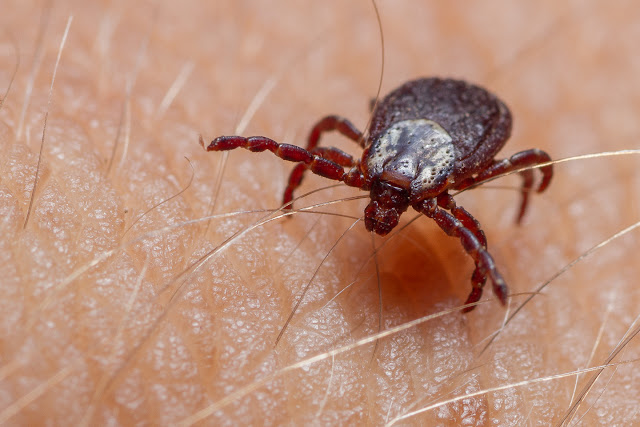Lyme disease. What is Lyme disease?
Lyme disease is contagious. Spirochete Borrelia burgdorferi, a type of bacterium, is the reason. Deer Tick or Black-legged tick Southwest bite people and transmit the bacteria to humans. These ticks about the size of a sesame seed. Lyme disease occurs mostly in rural and suburban areas. Lyme disease found in the United States, Europe, Asia, and Australia.
Lyme disease symptoms include pain in the neck "fever headache chills fatigue hardening" muscle joint pain, skin rash called erythema Migraines that appear from one week to one month after the tick bite. Usually starts this rash at the site tick bite. Original small red spot to grow larger. Fade Center, which looks like a "Bull's eye" or ring. Some people have many red spots only instead. Burns, rashes, and itching. But some people don't feel that way.
The infection spreads to the joints, heart and nervous system. Damaged or irregular heart beats slowly. Bell's palsy (facial drooping type) means nerve damage. If not treated, Lyme disease causes arthritis (arthritis) and more nervous problems. Usually, only one major joint, knee, for example, swells and hurts. Typical flame sometimes more than one. Later, the cause of Lyme disease, difficulty concentrating, memory loss, muscle weakness, tingling and numbness.
How to tell if you have Lyme disease?
Talk to your doctor about your symptoms. It's usually diagnosed Lyme disease if you have symptoms and physical findings (specific rash). The possibility of an infected tick bites is important. Lab experiments are useful mostly in the late stages of the disease. Early it may give wrong results. People who may be sick with Lyme disease since less than a month blood test negative, because they still have to develop antibodies to the disease. Also, early Lyme disease, patients taking antibiotics for other reasons may never develop Lyme disease test positive. Blood test almost always positive in patients who are sick for a month without antibiotics.
Enlarged joints or neurological symptoms may require special tests. Joint fluid aspiration of fluids or the spine helps identify the situation.
How to treat Lyme disease?
Most cases of Lyme disease is treated with a few weeks of antibiotics. Early Lyme disease requires 14 to 30 days of antibiotics. I usually give oral antibiotics. If it involves the nervous system, you may need antibiotics to be given intravenously. That all medicines prescribed by a doctor, according to the instructions. To prevent the spread of infection to the joints, heart and nervous system don't stop taking the medication. Call your doctor and discuss if you have some problems with drugs. Blood tests are not very useful to verify your transaction. Lyme disease sometimes gives positive tests even after treatment of the moth. In Lyme, may improve symptoms, but do not disappear completely. If symptoms persist or get worse after treatment, contact your doctor.
How to prevent Lyme disease?
The best way to avoid tick bites. Clothes in the Woods and a long-sleeved shirt and pants instead of shorts good protection. You can use repellents containing permethrin or similar staff. Follow the instructions for the application because it can cause centrifuges also skin irritation. After walking outdoors, check the body skin and scalp to tick and rashes. Check your pets. Remove ticks immediately pose for you. Also, consider the landscape and pest control in you area. And might transmit disease tick.
If you find a tick on your skin, use tweezers, grasp the tick close to the skin. Pull steadily, don't squeeze or twist the tick. If any parts of the skin, carefully remove them as if they were a splinter. Then put some antiseptic ointment. Old methods for putting kerosene, gasoline retailing hasn't proved to work well. After removing the tick, check your skin over the next month. In the case of skin rashes, go to a doctor and tell about the sting. Usually, people who are bitten by a tick, but I don't feel sick or get a skin rash, do not need antibiotics. If you are not sure, call your doctor in time to bite. May require some other diseases spread by ticks, additional procedures, and treatments.

EmoticonEmoticon